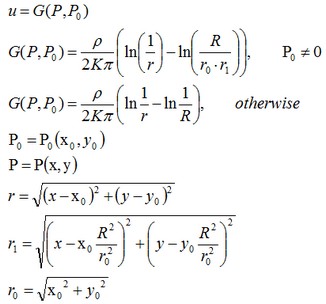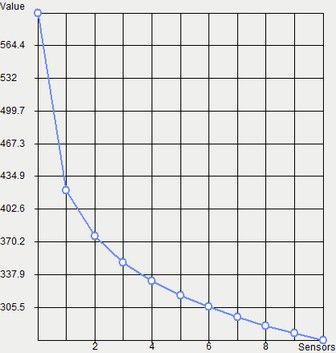 |
AutoFEM Analysis Disk Having a Constant Temperature on the External Cylindrical Surface and Being Heated along the Axis (surface) | ||||||
 |
AutoFEM Analysis Disk Having a Constant Temperature on the External Cylindrical Surface and Being Heated along the Axis (surface) | ||||||
Disk Having a Constant Temperature on the External Cylindrical Surface is being heated along the axis
Let us consider a two-dimensional problem of a steady-state temperature distribution on the end-face cross-section of a disk. A heater of zero thickness (a line) with a power of P=100 W is situated on the axis of the disk, and on the periphery a constant temperature of 273.15 oK is held.
Parameters of a disk: metal disk with thickness d=5 mm, radius R=100 mm and thermal conductivity K=50 W/(m • oK) [Alloy Steel (SS)].
(see figure).
|
Solution of this problem in which the source is regarded as distributed can be obtained by solving the problem for a point source of the heat. Let the origin of the coordinate system coincide with the center of the circular surface of a disk. The differential equation that has to be solved for a point source has the form:

where ρ – density of a distributed heat source. For our case: ρ = P / d. Solution of this equation is a Green’s function G (heat source function)

In this solution the zero point corresponds to the center of the disk. The Z-axis of the coordinate system, in which the solution is sought, is directed along the axis of the disk.
|
|
The finite element model with applied boundary conditions |
Let us compare analytical solution with the solution obtained from AutoFEM. After carrying out calculation the following results are obtained:
Table 1. Parameters of finite element mesh
Finite element type |
Number of nodes |
Number of finite elements |
linear tetrahedron |
3405 |
6608 |
Table 2. Result "Temperature"
Distance from the center, mm |
Numerical solution |
Analytical solution |
Error δ = 100%* |T* - T| / |T| |
R 30 |
349.9436 |
349.7972 |
0.04 |
R 40 |
331.5504 |
331.4828 |
0.02 |
R 50 |
317.3002 |
317.2771 |
0.01 |
R 60 |
305.6999 |
305.6701 |
0.01 |
|

Conclusions:
Relative error of the numerical solution as compared to the analytical solution did not exceed 0.04% when using linear element. Accuracy of the calculation grows when moving away from the heat source because of the singularity of the analytical solution at the point of heat source application (at the center of a disk).
The plot of dependence of the temperature on the radius shows that analytical and numerical solutions practically coincide. This implies that distributions of temperature maximums and minimums are the same, and hence, calculation of thermal heat fluxes and power will be carried out with the same degree of accuracy.
*The results of numerical tests depend on the finite element mesh and may differ slightly from those given in the table.
Read more about AutoFEM Thermal Analysis